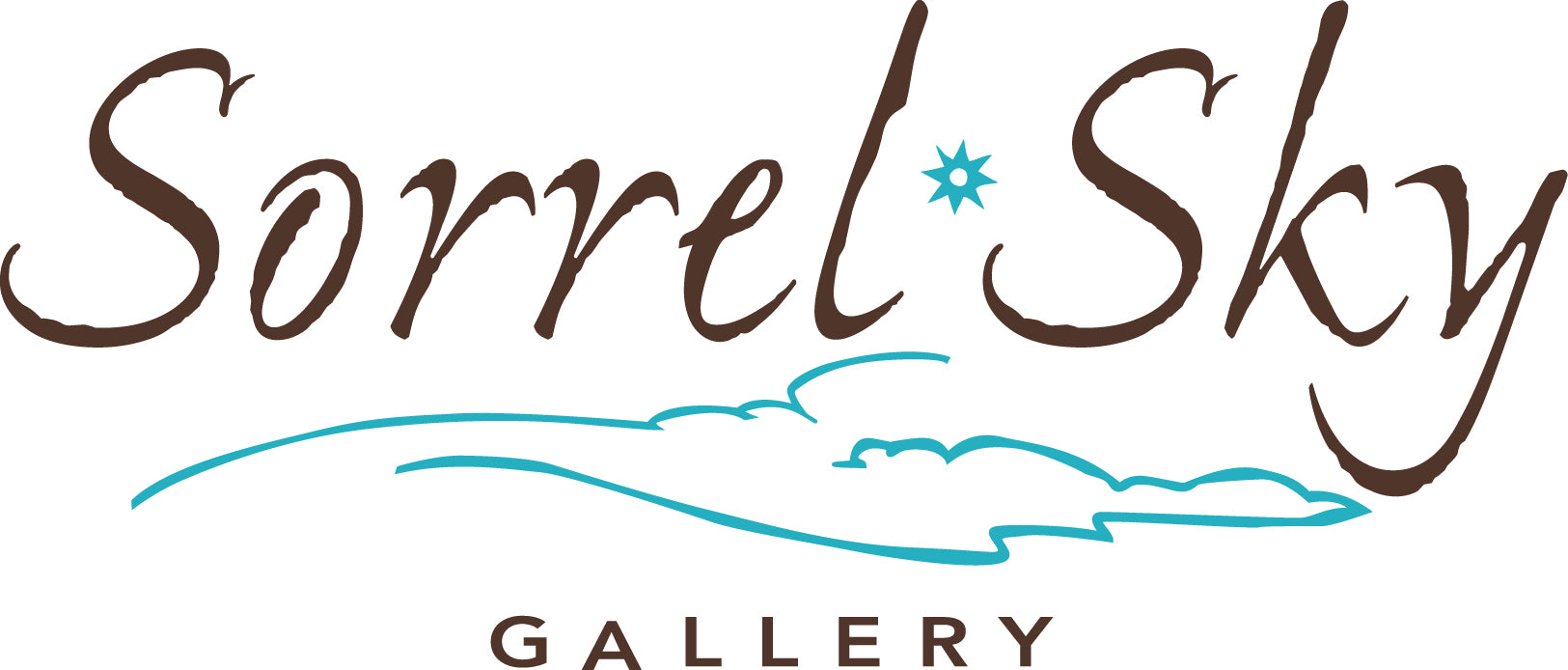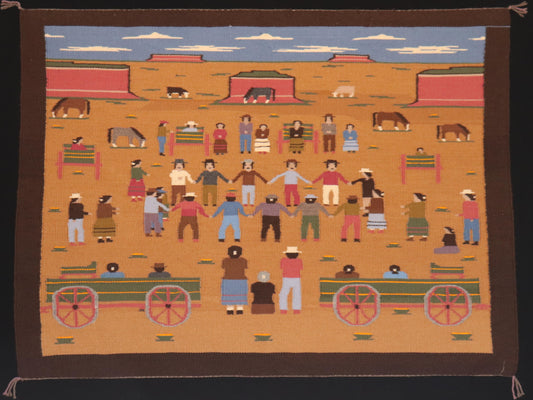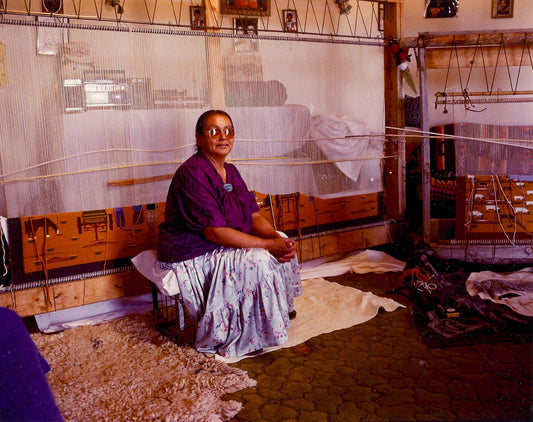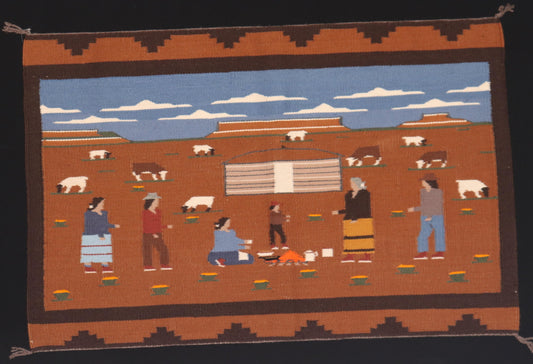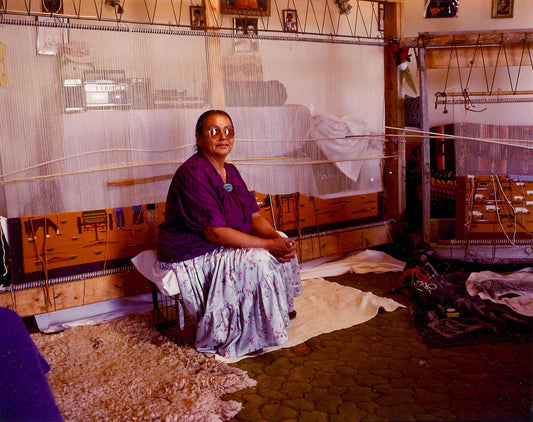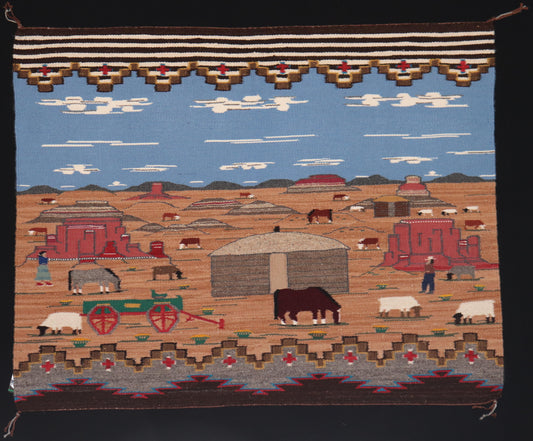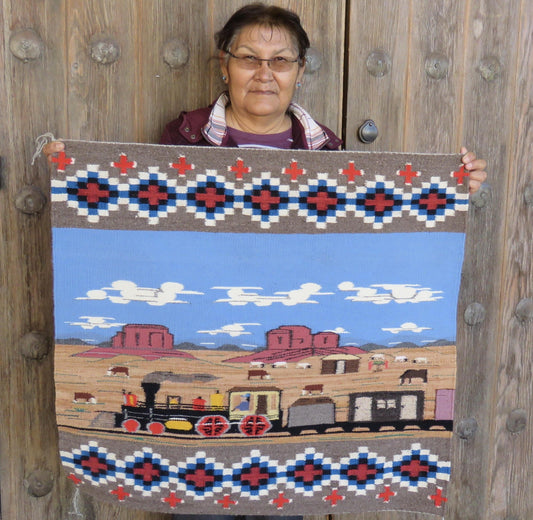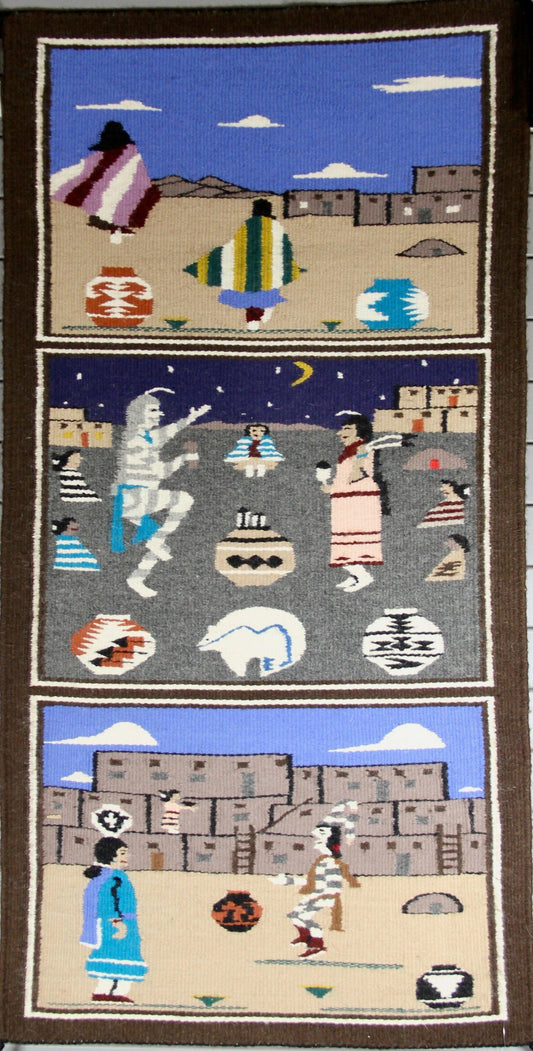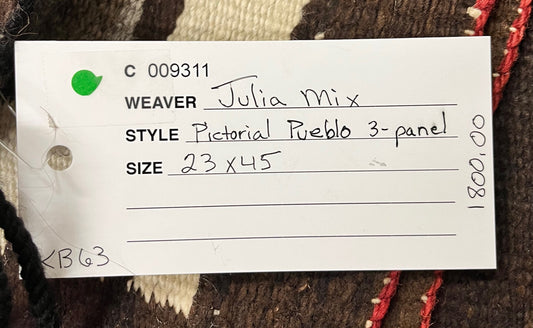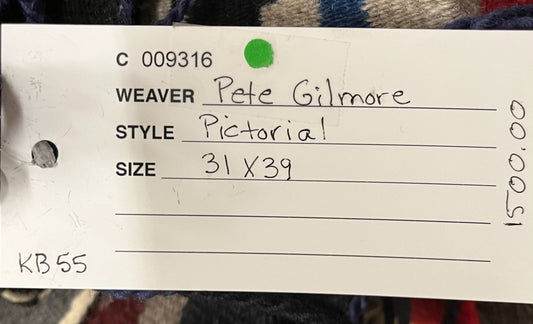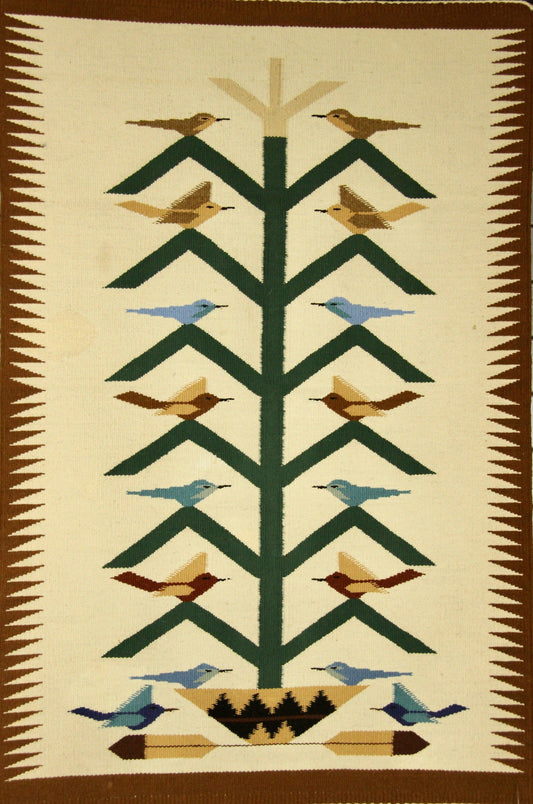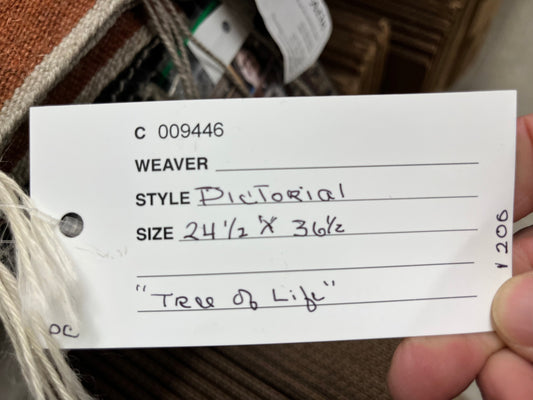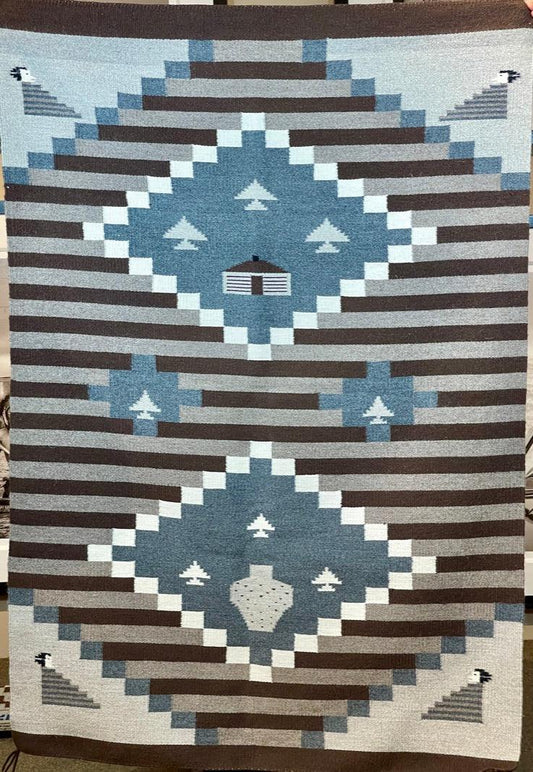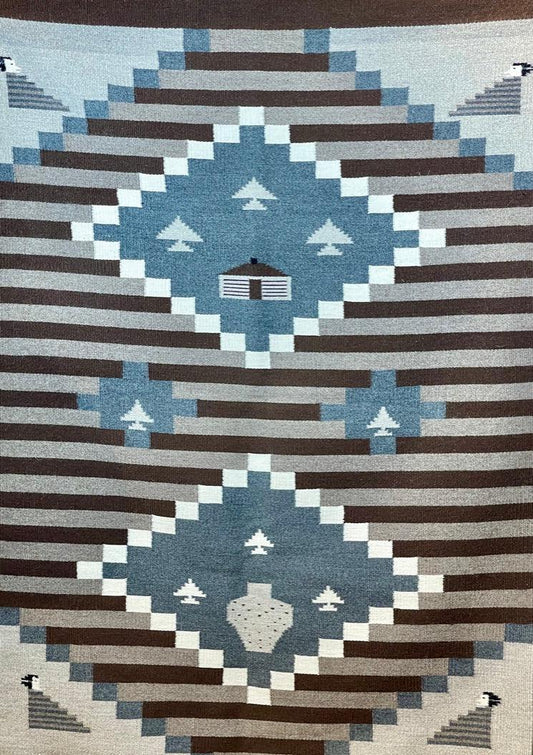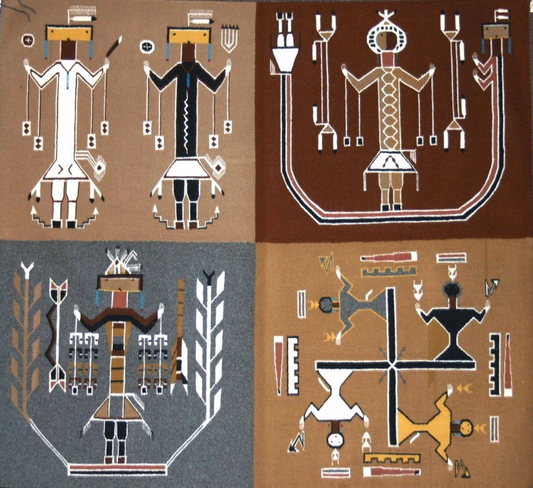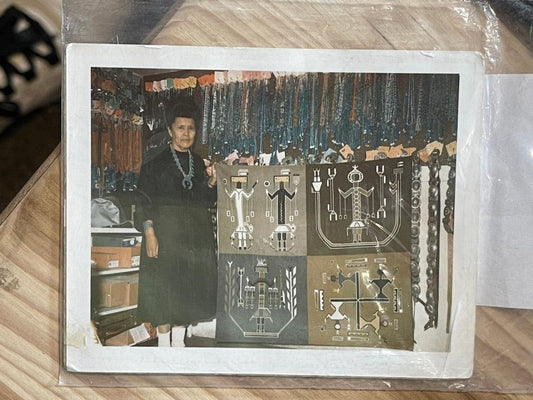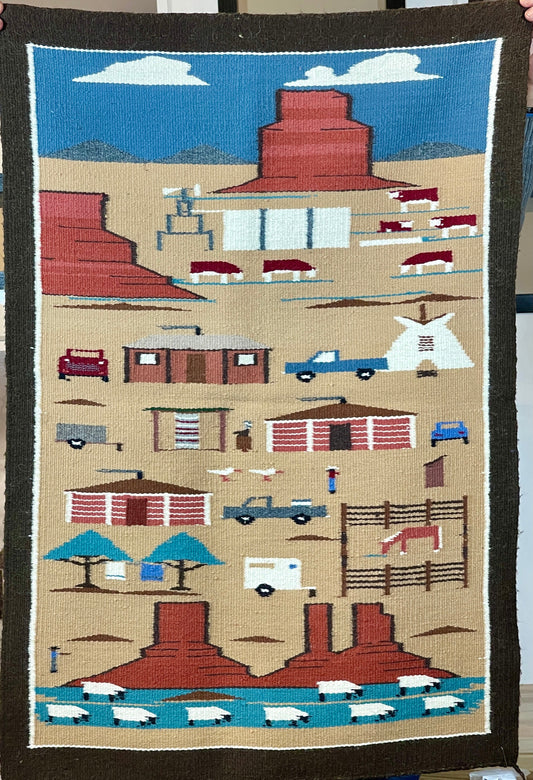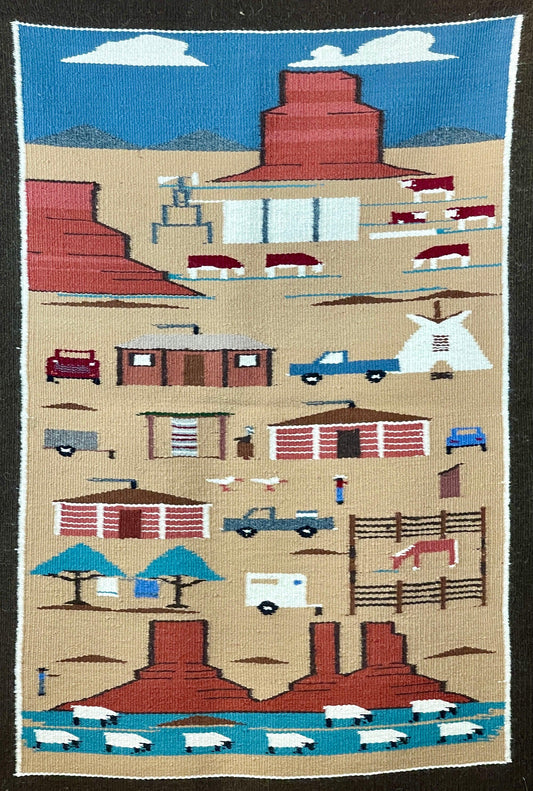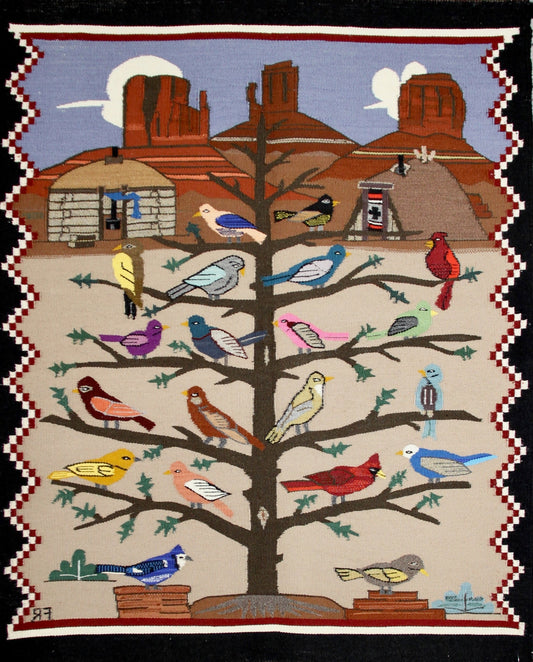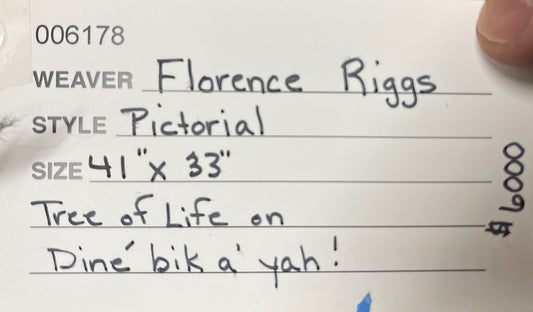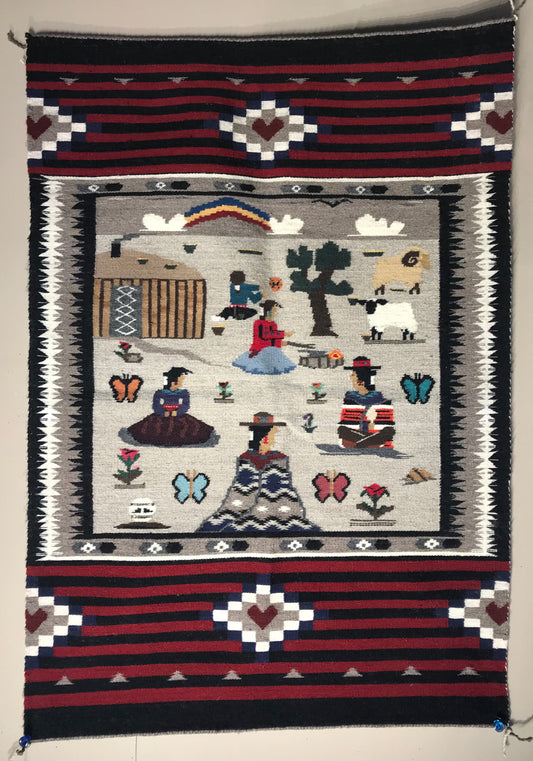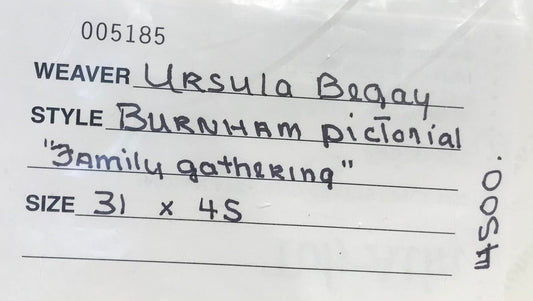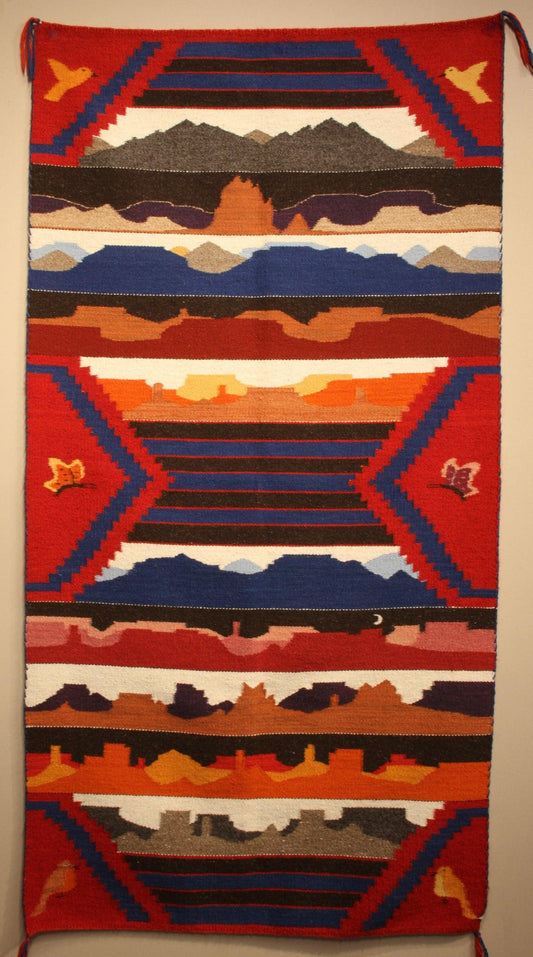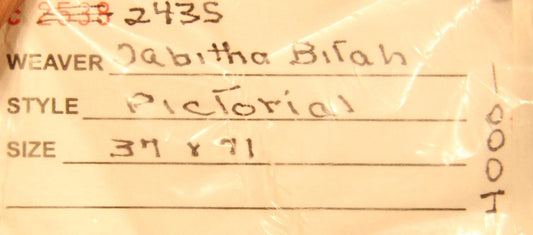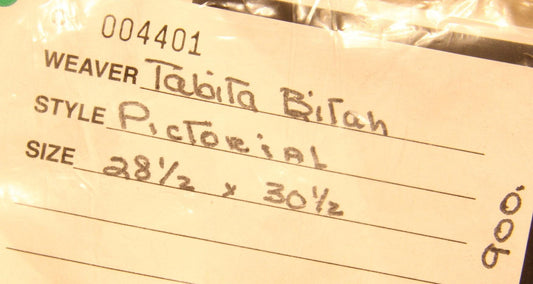Collection: Pictorial Weavings
-
Vendor:Navajo Weaving
Round Dance Pictorial Weaving
Regular price $ 19,500.00Regular priceUnit price per -
Vendor:Navajo Weaving
PICTORIAL Navajo Weaving
Regular price $ 4,500.00Regular priceUnit price per -
Vendor:Navajo Weaving
Pictorial Pueblo 3-panel
Regular price $ 1,800.00Regular priceUnit price per -
Vendor:Navajo Weaving
Pictorial - 31 x 39"
Regular price $ 1,500.00Regular priceUnit price per -
Vendor:Navajo Weaving
Pictorial Weaving 24.5" x 36.5" - C009446
Regular price $ 1,200.00Regular priceUnit price per -
Vendor:Navajo Weaving
Banded Pictorial 48" x 61" - C007436
Regular price $ 2,400.00Regular priceUnit price per -
Vendor:Navajo Weaving
Pictorial 34" x 46" - C007585
Regular price $ 24,000.00Regular priceUnit price per -
Vendor:Navajo Weaving
Pictorial Weaving 32" x 46" - C007648
Regular price $ 1,800.00Regular priceUnit price per
No More Products
-
Sold
-
Sold
-
Sold
-
Sold
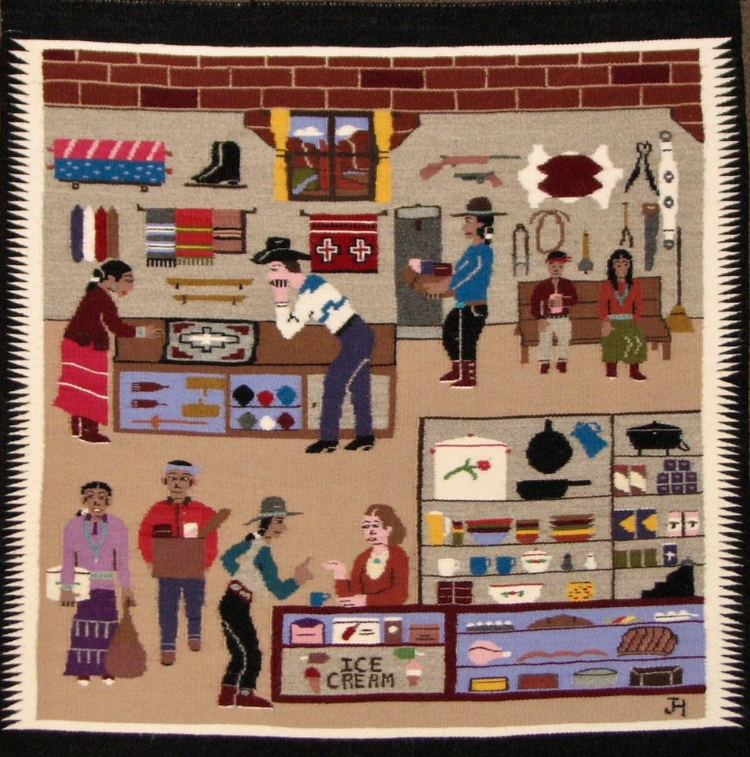
Initially, the Navajo wove blankets to wear. Later, after the introduction of trading posts to the reservation at the end of the 1800s, they began to alter their weaving style to create floor rugs.
While there were occasional pictorial elements in early Navajo weavings (when Chief White Antelope was killed at the Sand Creek Massacre, he was wearing a blanket that had the figures of birds woven into the pattern), it was not common.
Beginning in the late 1800s and early 1900s, a few weavers began to create rugs with pictorial elements in them. One of the early common designs featured the trains that ran across the reservation! But pictorial depictions seldom made up the entire weaving. It was in the 1950s that full blown pictorials began to show up with scenes of Navajo home life and animals. Most of these were in the “Grandma Moses” style, with very little perspective.
Today, while still not common, Navajo weavers are creating beautiful pictorials that are more like paintings utilizing a loom instead of a canvas. Many pictorial weavers have gained wide recognition for their work. But all Navajo pictorials have a unique charm.
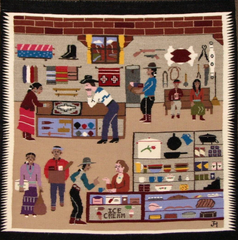
Initially, the Navajo wove blankets to wear. Later, after the introduction of trading posts to the reservation at the end of the 1800s, they began to alter their weaving style to create floor rugs.
While there were occasional pictorial elements in early Navajo weavings (when Chief White Antelope was killed at the Sand Creek Massacre, he was wearing a blanket that had the figures of birds woven into the pattern), it was not common.
Beginning in the late 1800s and early 1900s, a few weavers began to create rugs with pictorial elements in them. One of the early common designs featured the trains that ran across the reservation! But pictorial depictions seldom made up the entire weaving. It was in the 1950s that full blown pictorials began to show up with scenes of Navajo home life and animals. Most of these were in the “Grandma Moses” style, with very little perspective.
Today, while still not common, Navajo weavers are creating beautiful pictorials that are more like paintings utilizing a loom instead of a canvas. Many pictorial weavers have gained wide recognition for their work. But all Navajo pictorials have a unique charm.
